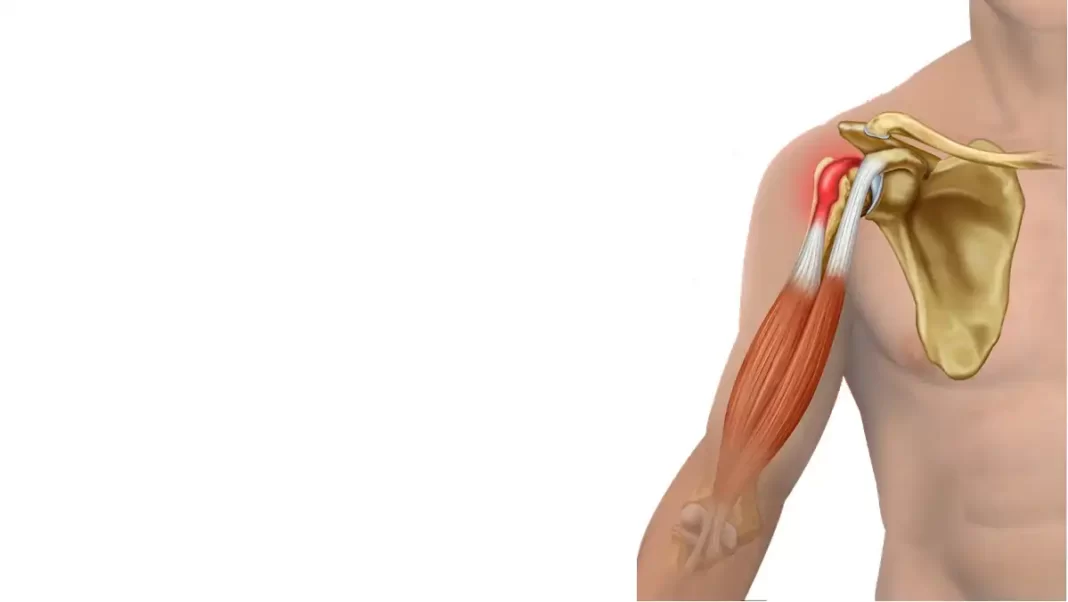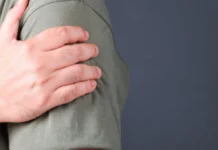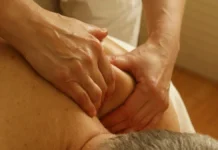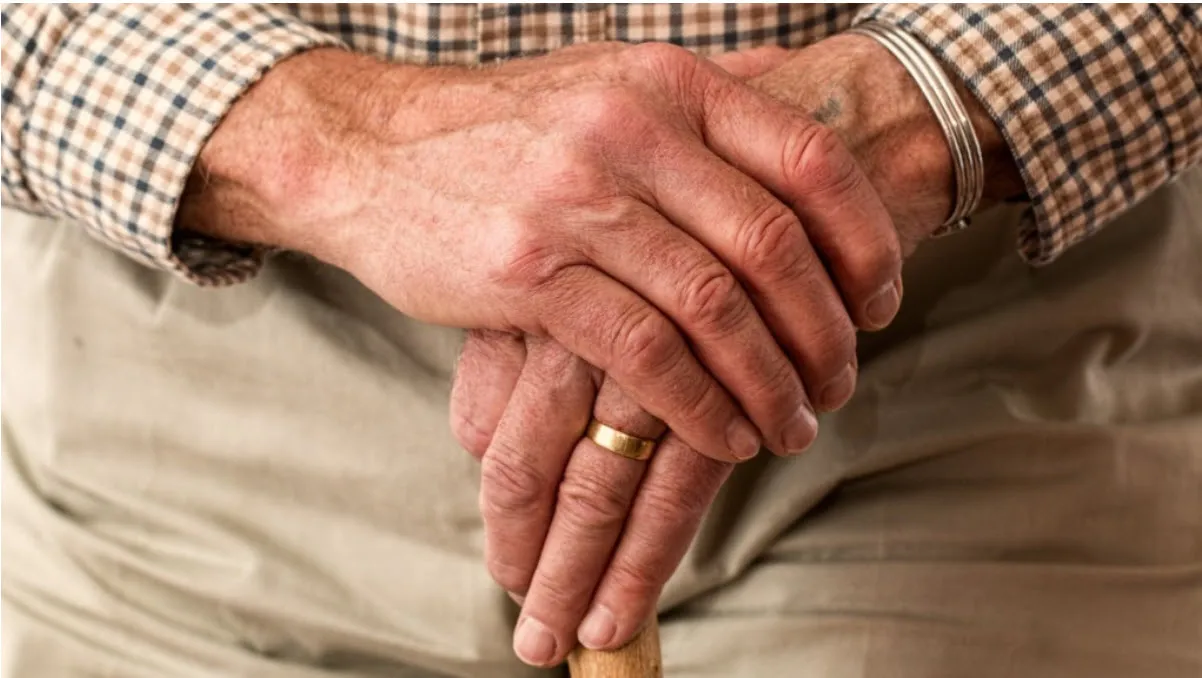Introduction
Bicipital tenosynovitis is a painful condition resulting from inflammation of the biceps brachii tendon and the synovial sheath surrounding it. This condition often occurs following repetitive arm movements, traumatic injuries or activities that put intense strain on the biceps muscle. Individuals with bicipital tenosynovitis typically experience pain in the anterior part of the shoulder, near the bicipital groove, which may worsen with certain arm movements.
One of the characteristic symptoms of bicipital tenosynovitis is pain localized in the front part of the shoulder, often associated with a feeling of stiffness. The pain may be exacerbated by flexion or rotation of the arm, as well as by palpation of the affected area. It is common for the pain to radiate down the arm, particularly towards the forearm.
Swelling and tenderness in the bicipital groove may accompany tenosynovitis, resulting from inflammation of the synovial sheath that surrounds the biceps tendon. When the sheath becomes inflamed, it can produce excessive synovial fluid, leading to a feeling of swelling and warmth in the area.
A typical symptom of bicipital tendinosis is anterior shoulder pain that worsens when flexing the shoulder forward. Bicipital tenosynovitis is partly due to impingement between the biceps tendons and the acromio-coracoid arch. Bicipital tenosynovitis usually appears acutely, after overuse or misuse of the shoulder joint, such as trying to start a lawn mower that refuses to start, or performing a tennis serve. above the head. The biceps muscle and tendons are susceptible to trauma and damage. If the injuries are severe enough, the tendon in the long head of the biceps can rupture, creating a “Popeye” bicep (named after the cartoon character).
Loss of strength or function in the affected arm may also be seen in some people with bicipital tenosynovitis. Activities requiring arm strength or extension can become difficult, compromising the ability to perform daily tasks.
Risk factors for bicipital tenosynovitis include work or sports activities that frequently strain the biceps muscle, as well as repetitive movements involving bending or rotating the arm. Individuals participating in sports such as throwing, weightlifting, or swimming are particularly susceptible to developing this condition.
Cause of bicipital tenosynovitis
Bicipital tenosynovitis has its origins in various causes, mainly linked to mechanical, traumatic or inflammatory factors that affect the biceps brachii tendon and its synovial sheath. Understanding these causes is crucial for accurate diagnosis and appropriate management of this painful condition.
Repetitive arm movements, such as those involved in certain work or sporting activities, represent one of the main causes of bicipital tenosynovitis. Excessive demands on the biceps muscle, associated with repetitive movements of flexion or rotation of the arm, can lead to excessive wear of the tendon and its synovial sheath. Professionals engaged in activities requiring intensive use of the arm, such as throwers in throwing sports or workers performing repetitive movements, are particularly exposed to this risk.
Traumatic injuries, such as direct impacts to the anterior shoulder or sudden arm movements, can also trigger bicipital tenosynovitis. These traumas cause micro-lesions in the tendon and synovial sheath, triggering an inflammatory response.
Intense sporting activities, especially those involving lifting or carrying heavy loads, can contribute to the development of this condition. Weight lifting, for example, puts a lot of strain on the biceps muscle and can increase the risk of bicipital tenosynovitis, particularly if lifting techniques are not correct.
Anatomical factors and the presence of underlying medical conditions may also play a role in triggering bicipital tenosynovitis. Particular shoulder anatomy or conditions such as arthritis can increase friction and pressure on the tendon, allowing inflammation to develop.
- Overuse or overload: Constantly repeating arm movements, especially those involving extension or flexion of the elbow, can lead to overuse of the biceps tendon, causing irritation and inflammation.
- Acute trauma: Trauma such as sports injuries, falls, or direct impacts to the shoulder can damage the biceps tendon and trigger an inflammatory response.
- Repetitive movements: Certain work or sporting activities that involve repetitive arm movements may contribute to the development of bicipital tenosynovitis. This may include repetitive actions at work, poorly performed strength training exercises, or specific sports activities.
- Underlying medical conditions: Medical conditions such as arthritis, tendinitis, or other inflammatory disorders may increase the risk of developing bicipital tenosynovitis.
- Anatomical abnormalities: Anatomical abnormalities of the shoulder or biceps tendon may increase susceptibility to inflammation.
- Age: Bicipital tenosynovitis may occur more frequently with age due to normal wear and tear of tendons and joint structures.
- Overweight: Excess weight can increase the load on joints and tendons, increasing the risk of inflammation.
- Improper exercise technique: Improper use of weight training equipment or poor technique when performing exercises can overwork the biceps tendon and lead to inflammation.
Symptoms of bicipital tenosynovitis
Symptoms of bicipital tenosynovitis are characterized by a combination of pain, swelling, and limitation of movement in the shoulder and arm area. This condition affects the tendon of the biceps brachii muscle, as well as the synovial sheath surrounding it, leading to specific clinical manifestations.
Pain is one of the predominant symptoms of bicipital tenosynovitis. Affected individuals typically feel localized pain in the front of the shoulder, near the biceps tendon. This pain may be described as stabbing or sharp, and it often intensifies with movement of the arm, especially when bending or rotating. Palpation of the painful area can also trigger increased sensitivity.
Swelling is commonly seen in the affected area. Inflammation of the synovial sheath due to tenosynovitis can lead to fluid buildup, causing a sensation of swelling and increased visibility of the affected area. Swelling can contribute to shoulder stiffness and limit range of motion, making symptoms worse.
Limitation of movement is another major symptom of bicipital tenosynovitis. Affected individuals may experience difficulty lifting or moving their arm due to the pain and stiffness associated with this condition. Daily activities, such as combing your hair, reaching overhead, or carrying loads, may become painful and restricted.
Sometimes, cracking or crackling sounds may be felt when moving the affected arm. These noises may result from increased friction between the biceps tendon and its synovial sheath, accentuated by inflammation. Although these crackles are not specific to bicipital tenosynovitis, their presence may be an additional indicator of the condition.
- Pain: Pain is a common symptom of bicipital tenosynovitis. It is usually felt in the front of the arm, near the shoulder, and may worsen with arm movements.
- Swelling: Inflammation can cause swelling around the affected area, which may be visible or noticeable to the touch.
- Crackle or crackle: Some individuals may feel or hear a crackle or crackle when they move their arm. This may be due to friction between the inflamed tendon and the synovial sheath.
- Stiffness: Bicipital tenosynovitis can cause stiffness in the arm, limiting the shoulder’s range of motion.
- Muscle Weakness: Due to pain and inflammation, some individuals may experience weakness in the biceps muscle, which can affect arm strength.
- Tenderness to touch: The affected area may be tender to the touch, and pressure on the inflamed tendon may make the pain worse.
Pathophysiology
The pathophysiology of bicipital tenosynovitis is based on inflammation of the synovial sheath which surrounds the tendon of the biceps brachii muscle. This condition often results from repetitive strain injury, excessive movement, or overuse of the arm, causing irritation and an inflammatory reaction in the tendon.
During the pathophysiology, repeated microtrauma can lead to lesions in the biceps tendon. These lesions trigger an inflammatory response, characterized by the release of inflammatory mediators such as prostaglandins and cytokines. These chemicals promote vasodilation and blood flow to the affected area, thereby contributing to inflammation.
Inflammation of the synovial sheath is a key component of bicipital tenosynovitis. The synovial sheath is a membrane that surrounds the biceps tendon, ensuring its lubrication and facilitating its movement in space. However, with overuse or trauma, this sheath can become inflamed, lose its normal lubrication capacity and lead to increased friction between the tendon and its sheath.
The inflammatory response can also cause thickening of the synovial sheath, reducing the space available for tendon movement. This increased compression can worsen the pain and stiffness experienced by individuals with bicipital tenosynovitis. Additionally, the buildup of inflammatory fluid can lead to a feeling of swelling in the affected area.
Symptoms, such as pain, swelling, and limitation of movement, result from the complex interplay between inflammation-induced anatomical changes and associated neurological responses. The pain is often exacerbated by movement of the arm, as the inflamed tendon and irritated synovial sheath experience additional strain.
- Tendon insult or overuse: Bicipital tenosynovitis can often be triggered by repetitive arm movements, intensive sports activities, trauma, or overuse of the muscle. These factors can attack the biceps tendon, leading to an inflammatory response.
- Initial inflammatory response: When the biceps tendon is attacked, the body responds by triggering an inflammatory response to attempt to heal the damaged area. Chemical mediators, such as prostaglandins, are released, leading to vasodilation and increased permeability of blood vessels.
- Infiltration of Inflammatory Cells: Immune system cells, such as leukocytes (white blood cells), migrate to the affected area to fight the perceived aggressor. This contributes to inflammation and can cause symptoms such as pain, swelling and warmth.
- Synovial fluid production: The synovial sheath that surrounds the biceps tendon normally produces synovial fluid to facilitate movement of the tendon. However, in response to inflammation, the production of this fluid can increase, leading to excessive accumulation and contributing to the formation of tenosynovitis.
- Thickening of the synovial sheath: Due to persistent inflammation, the synovial sheath may thicken. This can lead to increased friction between the biceps tendon and the sheath, contributing to symptoms such as crackling or cracking during arm movements.
- Scar formation: In more severe or prolonged cases, healing processes may occur, leading to scar formation around the tendon. This can lead to loss of flexibility and stiffness of the muscle.
Differential diagnosis of bicipital tenosynovitis
- Rotator Cuff Tendon Injuries: Injuries or inflammation of the rotator cuff tendons can cause similar symptoms, including shoulder pain and decreased mobility.
- Shoulder bursitis: Inflammation of the synovial bursa, located between the tendons and bones of the shoulder, can cause similar pain and swelling.
- Subacromial impingement syndrome: This is a condition where the rotator cuff tendons can be compressed under the shoulder bone (acromion), leading to pain and limitations of movement.
- Shoulder Arthritis: Forms of arthritis, such as osteoarthritis or rheumatoid arthritis, can cause inflammation of the shoulder joints, causing similar symptoms.
- Bicipital tendonitis: Although bicipital tenosynovitis involves inflammation of the synovial sheath surrounding the biceps tendon, bicipital tendonitis refers specifically to inflammation of the tendon itself.
- Shoulder Instability: Certain problems related to shoulder instability, such as recurrent dislocations, can also present with similar symptoms.
Bicipital tenosynovitis usually occurs in association with other shoulder problems
Bicipital tenosynovitis can sometimes be associated with other shoulder problems, although this is not always the case. Some shoulder disorders that may be linked to bicipital tenosynovitis include:
- Subacromial impingement syndrome: This is a condition in which the mango tendons of the rotators, located under the shoulder bone (acromion), can become pinched or rubbed during arm movements.
- Bursitis: An inflammation of the synovial bursa, a small sac of fluid that reduces friction between the tendons and bones in the shoulder.
- Rotator cuff tendon injuries: The rotator cuff tendons can be affected by injuries, partial tears, or inflammation, which can lead to similar symptoms.
- Shoulder arthritis: Inflammation of the shoulder joints, such as osteoarthritis or rheumatoid arthritis, can also be associated with biceps tendon problems.
References
- Frank RM, Cotter EJ, Strauss EJ, Jazrawi LM, Romeo AA. Management of Biceps Tendon Pathology: From the Glenoid to the Radial Tuberosity. J Am Acad Orthop Surg. 2018 Feb 15;26(4):e77-e89. [ PubMed ]
- Nho SJ, Strauss EJ, Lenart BA, Provencher MT, Mazzocca AD, Verma NN, Romeo AA. Long head of the biceps tendinopathy : diagnosis and management. J Am Acad Orthop Surg. 2010 Nov;18(11):645-56. [ PubMed ]
- Neer CS. Anterior acromioplasty for the chronic impingement syndrome in the shoulder: a preliminary report. J Bone Joint Surg Am. 1972 Jan;54(1):41-50. [ PubMed ]
- Jobe FW, Moynes DR, Tibone JE, Perry J. An EMG analysis of the shoulder in pitching. A second report. Am J Sports Med. 1984 May-Jun;12(3):218-20. [ PubMed ]
- Pagnani MJ, Deng XH, Warren RF, Torzilli PA, O’Brien SJ. Role of the long head of the biceps brachii in glenohumeral stability: a biomechanical study in cadavera. J Shoulder Elbow Surg. 1996 Jul-Aug;5(4):255-62. [ PubMed ]
- Itoi E, Kuechle DK, Newman SR, Morrey BF, An KN. Stabilizing function of the biceps in stable and unstable shoulders. J Bone Joint Surg Br. 1993 Jul;75(4):546-50. [ PubMed ]
- Wilk KE, Hooks TR. The Painful Long Head of the Biceps Brachii: Nonoperative Treatment Approaches. Clin Sports Med. 2016 Jan;35(1):75-92. [ PubMed ]
- Borms D, Ackerman I, Smets P, Van den Berge G, Cools AM. Biceps Disorder Rehabilitation for the Athlete: A Continuum of Moderate-to-High-Load Exercises. Am J Sports Med. 2017 Mar;45(3):642-650. [ PubMed ]
- Eakin CL, Faber KJ, Hawkins RJ, Hovis WD. Biceps tendon disorders in athletes. J Am Acad Orthop Surg. 1999 Sep-Oct;7(5):300-10. [ PubMed ]

























